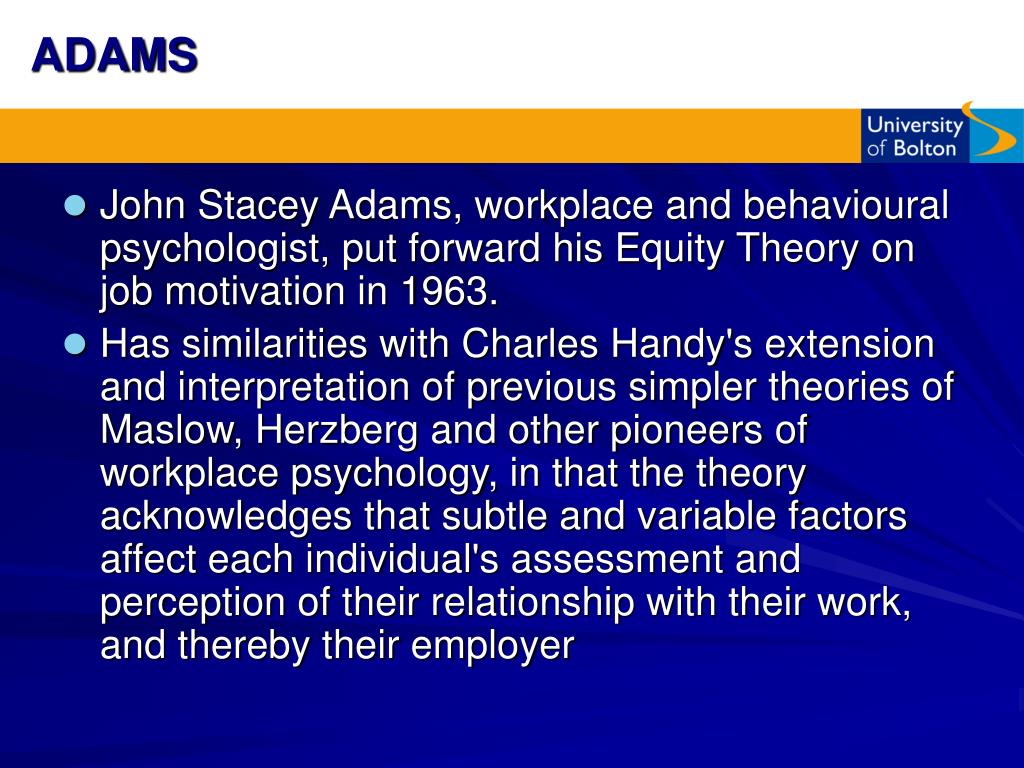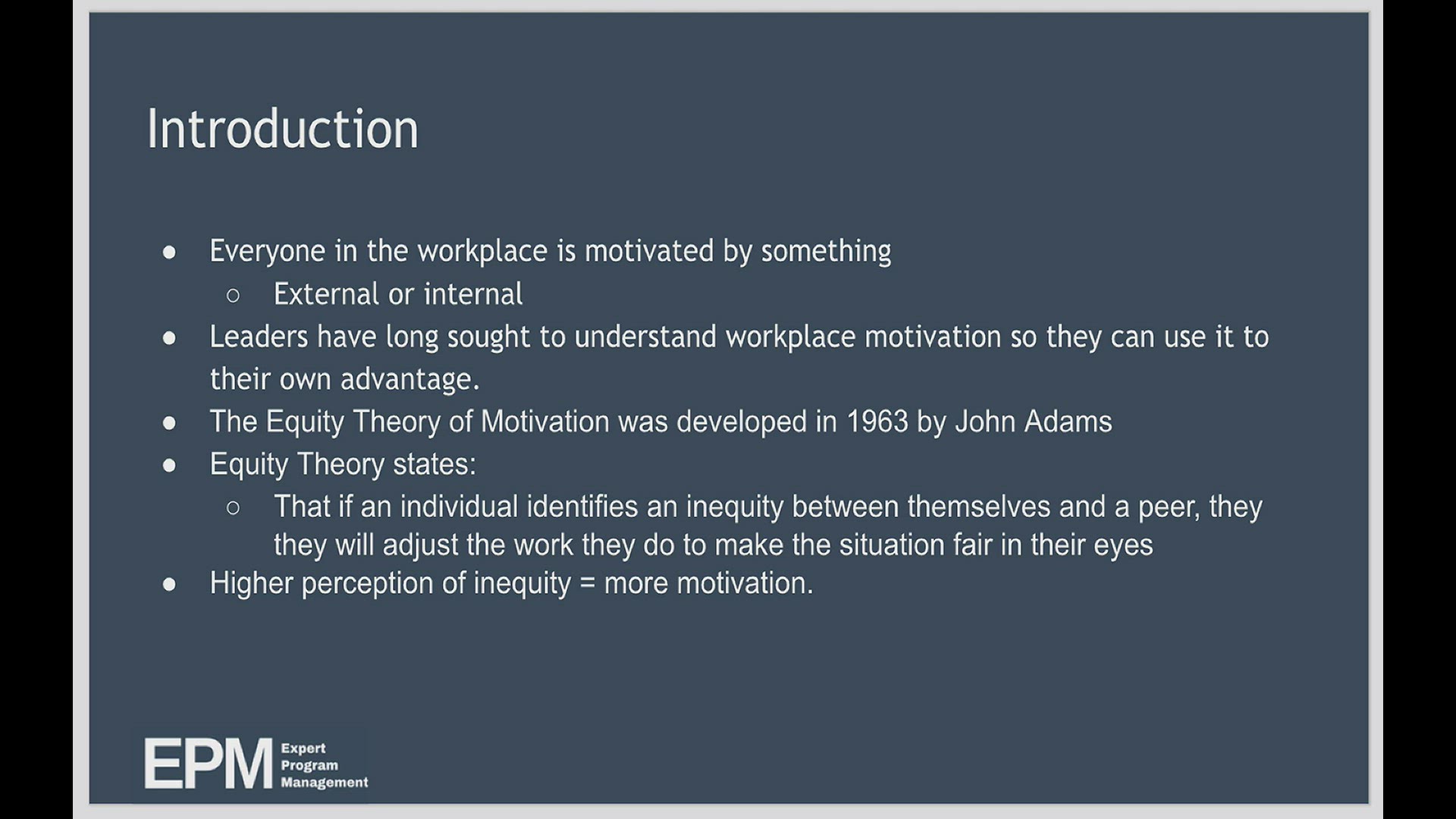

Walster et al (1978) proposes a detailed analysis of Adams' equity theory and other researches on the topic of motivation and productivity. The book Equity: Theory and Research by E. The Adam's Equity Theory was proposed by John Stacey Adams, and is based on the following assumptions: Individuals make contributions (inputs) for which they expect certain rewards (outcomes). Victor Vroom's Expectancy theory (1964), Stacy Adams' Equity theory (1965), B F Skinner's Reinforcement theory (1974), Douglas McGregor's theory x and Y . Stacey Adams' equity theory is a process model of motivation.

Equity theory, most popularly known as equity theory of motivation, was first developed by John Stacey Adams, a workplace and behavioral psychologist, in 1963. It's about the balance between the effort an employee puts into their work (input), and the result they get in return (output). this book, four relevant theories were chosen to address the consequnces of IWE and to support the proposed relationships. See FREDERICK SCHAUER, PLAYING BY THE RULES (1991) for. The two most well-known of these theories are J. Found insidetheory is unscientific, being based on personal beliefs rather than.

"It's about whether or not they feel they are being paid fairly. Another theory relevant to the goals of this study is equity theory, which asserts that workers are motivated by a desire to be treated fairly, which is measured by the ratio of their inputs and outcomes (Adams, 1965). This text then provides the necessary theoretical background for the study. Organized into 12 chapters, this book begins with an overview of the primary justice theories and identifies some of the focal issues with which they are concerned. The completed research and findings are compiled in his 1959 book The Motivation to Work. The Adams Equity Theory And Evaluating The Goal Setting Theory 1881 Words | 8 Pages. After reading it, you will understand the basics of this powerful motivation theory. Maslow's hierarchy of needs Alderfer's ERG theory.

What is the Adams Equity Theory? Workers possess certain inputs that they bring to the job, like skills, time, and effort. Adams' equity theory identifies both inputs and outcomes as the two primary components in the employee-employer exchange, Kinicki & Kreitner (2007, p. Adams ‘s (1965) equity theory is another form of motivation. 65 Motivation: Books, Balance, and Burnout Avoidance. Equity theory: A review and critique 1969 - Organizational Behavior and Human Performance Found inside – Adams' Equity Theories. Adams book “Inequity in social exchange.” In organizational behaviour, equity theory looks at the value that workers place on fairness in organizations. Equity Theory was originally developed and published in John S. Equity theory, developed by Jean “Stacy” Adams, filled in the blank. John Stacey Adams developed a theory related to the balance between the effort an employee puts into their work and the result they get in the return,in the year of 1963 Found inside – The two-factor aspect of the theory was subsequently explained by Vroom (1964) in. Stacy Adams, is a process theory which is actually based on the idea of inequity. Equity Theory adds a crucial additional perspective of comparison with ‘referent’ others (people we consider in a similar situation). It says that the level of reward we receive, compared to our own sense of our contribution, affects our motivation. According to Adams, equity theory is based on the simple assumption that people want to be treated fairly.


 0 kommentar(er)
0 kommentar(er)
